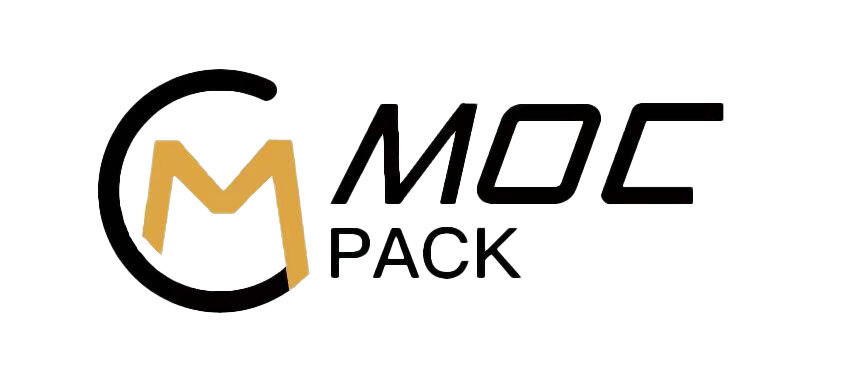How to achieve perfect printing on plastic containers: A guide for cosmetic packaging material manufacturing
>Mastering these plastic printing techniques can transform your cosmetic packaging from ordinary to exceptional.
In the fiercely competitive cosmetics market, packaging is not only a protective shell for products, but also a silent spokesperson for brands. When consumers pick up your lotion bottle or face cream jar for the first time, the printing quality and texture of the container surface will directly affect their judgment on product quality.
As a professional supplier in the field of cosmetic packaging materials, we are well aware of the challenges faced in achieving exquisite and durable printing effects on plastic containers, from adhesion issues to technical difficulties in curved printing. This article will comprehensively analyze the core technology and practical skills of plastic container printing.
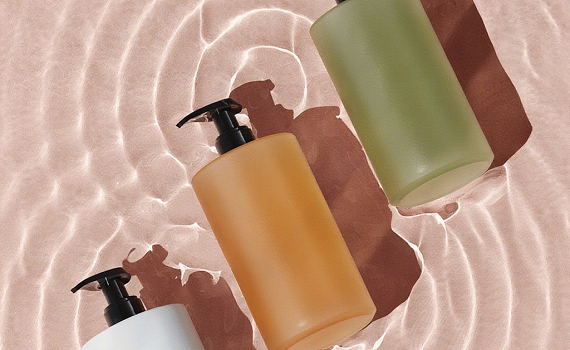
Fundamentals of Plastic Printing: Why is it Different from Ordinary Materials?
The essence of plastic printing is to achieve firm adhesion of ink on low surface energy, non absorbent substrates. Unlike paper, plastic molecules contain polar substances in their structure, have good chemical stability, and are insoluble in general solvents at room temperature, making it difficult for ink to adhere.
Moreover, antioxidants, stabilizers, and other additives added to plastics during the production process will migrate to the surface, further reducing ink adhesion. These characteristics determine that plastic printing must adopt special processes:
1. Pre press surface treatment is indispensable - increasing surface energy through physical or chemical methods
2. The dedicated ink system is the key to success - ordinary ink cannot firmly adhere
3. The curing method needs to be carefully designed, especially for cosmetic containers that often come into contact with substances such as water and oil
Detailed explanation of printing process for plastic containers
1. Curved screen printing: the preferred choice for irregular containers
Curved screen printing is applicable to cylindrical, conical and cosmetic containers with small radian (about 30 °) surfaces, such as lotion bottles, face cream cans, etc. The principle is to apply pressure through a scraper to make the screen tightly contact the rotating substrate, achieving pattern transfer.
Technical essentials:
-Maintain a 2-3mm gap between the screen and the unprinted substrate
-The centerline of the scraper should be perpendicular to the centerline of the container's rotation
-The substrate must be able to rotate stably during printing
-The mesh frame needs to move smoothly and evenly left and right
For cosmetics containers with special shapes (such as face washing bottles with handles), customized special fixtures and shaped mesh frames are required. Small curvature containers can be made using the curved mesh process: a curved wooden frame is made, and the mesh is stretched using the driving method. L-shaped hardware accessories are added around the wooden frame to prevent deformation.
2. Pad printing technology: the ideal choice for concave convex surfaces
Transfer printing uses a silicone head to transfer the pattern on the etching plate to the surface of the container, which is particularly suitable for the common textured surfaces and small area label printing in cosmetic packaging.
Its advantage lies in its ability to handle complex geometric shapes that are difficult for screen printing to handle, such as irregular areas on the shoulders or top of the lid of a soft tube face washing bottle.
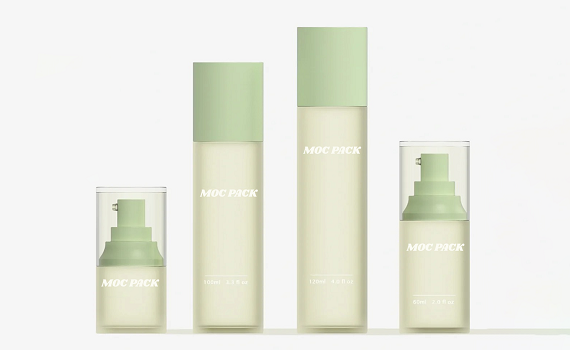
3. UV digital printing: a new trend of small batch customization
UV printing technology uses piezoelectric nozzles to directly spray UV ink onto the surface of plastic containers, which immediately solidifies upon exposure to ultraviolet radiation. This method is particularly suitable for the growing demand for small batch customization and complex pattern printing in the cosmetics industry.
The advantages include:
-No need for plate making, can directly print computer design files
-Instant printing and drying, high production efficiency
-Can achieve high-definition images on various plastic materials
-Ink is scratch resistant, waterproof, and not easily faded
UV printing has been widely used in the field of cosmetics packaging. From the gradual change of color on the plastic bottle to the fine logo on the face cream can cover, excellent visual effects can be achieved.
4. Interior Decoration (IMD): High end Packaging Solution
IMD technology places printed patterns on the inside of transparent films and forms a protective layer through in mold injection molding, making it particularly suitable for cosmetic packaging that requires high durability, such as product containers that frequently come into contact with water and bathing environments.
Process classification:
-IML: Suitable for small curved packaging
-IMF: Used for high tensile 3D structures
-IMR: After transfer printing, only the ink layer remains on the surface
Although the technology is expensive, it can provide excellent wear resistance and image durability, and has become the preferred decoration process for high-end face cream cans and essence bottles.
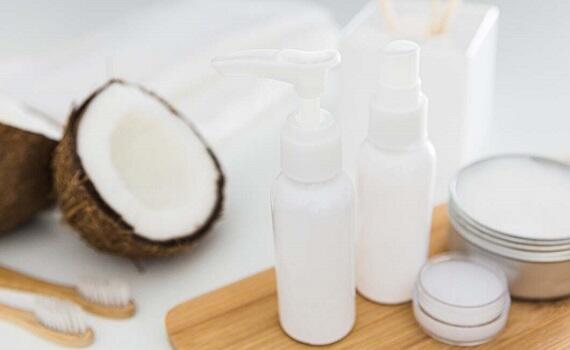
Practical skills and solutions to common problems
1. Three key aspects of prepress surface treatment
-Defatting treatment: Remove residual mold release agent and grease from the mold. Materials such as ABS and polystyrene can be wiped with methanol, ethanol, or isopropanol; For PP and PE materials that are difficult to adhere to, stronger treatment is required
-Dust and static removal: Use compressed air nozzles with high-voltage electrodes for spark discharge treatment, while solving dust and static removal problems. Static brush is also an efficient choice
-Surface energy improvement:
Polyolefin materials (PP/PE): flame treatment or corona treatment
Polyester material (PET): UV light treatment
Nylon material: phosphoric acid treatment
Flame processing techniques: The length of the flame core is 6-19mm, with a distance of 6-25mm from the surface, a contact time of 0.1-1 second, and a container rotation speed of 100-150 revolutions per minute. Accurate control is required to prevent deformation.
2. Quality assurance measures for curved printing
The common problem of blurred patterns at both ends in surface printing can be solved by the following methods:
-Choose a scraper with appropriate hardness (usually 70-80 Shore hardness)
-Ensure uniform tension of the wire mesh (polyester mesh tension value of about 1.5mm)
-Using high mesh polyester wire mesh with a size of 110 mesh/cm or more to improve the clarity of imprint edges
-When designing the original manuscript, the stroke spacing should be 0.1mm larger than the actual effect to offset ink leveling errors
3. Common Printing Problems and Countermeasures
-Insufficient adhesion: Using the grid test (1mm x 1mm square), the detachment rate should be 0%. The solution is to adjust the ink solvent system to make its solubility parameter (SP) close to that of the plastic substrate
-Pinhole phenomenon: adding 0.5% -2% ink leveling agent; Check for screen dust contamination; Ensure a clean environment
-Drawing problem: adding slow drying solvents to reduce ink viscosity; Eliminate static electricity (control the environmental humidity at around 60%); Use anti-static agent to treat the surface
-Orange peel pattern: avoid using solvents that evaporate too quickly; Add additives with low surface tension; Control the thickness of the ink layer
-Ink cracking: replace weak solvent system ink; Reduce internal stress during injection molding; Avoid excessive corrosion of plastic surfaces by strong solvents

4.Guidelines for Printing Methods on Different Plastic Surfaces
Characteristics and printing adaptability of commonly used plastic materials for cosmetic containers:
| Plastic Types | Common Applications | Surface Treatment Requirements | Recommended Printing Processes | Precautions |
| ABS | Lotion bottles, cream cans | Alcohol wiping is enough | Screen printing, UV printing | Avoid cracking caused by strong solvents |
| PP/PE | Facial wash bottle, hose | Flame/corona treatment necessary | Flexographic printing, pad printing | Special ink, poor adhesion |
| PET | Essence bottle, transparent jar | UV light treatment | Intaglio printing, UV printing | Transparency retention |
| PS | Cosmetics box, bottle cap | Sanding to remove grease | Screen printing, transfer printing | Avoid solvent erosion |
| PMMA | High-end face cream tank | Electrostatic precipitation | IMD, UV printing | Surface hardness protection |
Key points for printing special containers:
-Soft tube facial cleanser bottle: Choose flexographic printing or transfer printing to adapt to the squeezing deformation characteristics
-Transparent lotion bottle: UV printing can make local transparent effect and enhance texture
-Scrub face cream can: increase the ink layer thickness for screen printing to ensure the covering power
-Small caliber bottle mouth: transfer printing technology can achieve precise positioning printing
Innovation Trend: Sustainable Printing Solutions
Cosmetics packaging printing is rapidly developing towards environmental protection:
-Application of water-based ink: reduce VOC emissions, adapt to European and American environmental regulations
-UV LED curing technology: energy consumption reduced by 70% compared to traditional UV systems, longer lifespan
-Solvent free composite process: widely used in hose packaging
-Degradable printing materials: in line with the development trend of biobased plastic containers
In the field of cosmetic packaging, printing quality directly affects consumers' perception of product quality. From ABS lotion bottle to PP cleanser hose, each material needs specific surface treatment and printing process matching. Mastering key technologies such as degreasing and dust removal, surface modification, ink selection, and process parameter control is necessary to achieve exquisite and long-lasting decorative effects on various plastic containers.
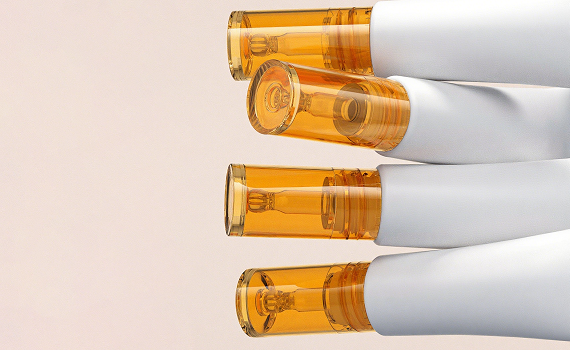
As a leading supplier of cosmetic packaging materials in the industry, we have reduced the energy consumption of UV printing production lines by 40% and developed environmentally friendly ink systems suitable for various plastic surfaces to help our brand customers achieve sustainable development goals.Our company offers one-stop solutions from container design to surface printing for global cosmetic brands. If you have any needs, please feel free to contact us at any time.
